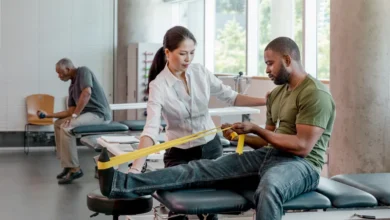Recognizing Signs That May Indicate You Need Spinal Surgery

In many situations, problems cannot be handled simply by lifestyle modifications or medication regimens. For this purpose, it is essential to have a complete follow-up plan from the authorized doctor to track the progress of your treatment.
Below this, we will highlight the recognizing signs that may indicate you need spinal surgery.
Persistent pain and numbness:
One of the main indications for spine surgery is persistent, debilitating pain that severely compromises quality of life and functional ability. Surgery can be considered if conservative treatments such as medications, exercises, and injections have failed to relieve chronic back and neck pain.
Widespread pain in the arms or legs (radiculopathy) or nerves internal symptoms such as weakness, nausea, and vomiting should be referred to a spine surgeon without any delay.
Slowly progressive arthritis:
If muscle tension contradicts the structure of the muscles, symptoms may indicate eventual contraction of the instrument, such as weakness, numbness, or sympathy. Persistent deterioration may require decompression surgery to relieve pressure on the removed muscle or spine.
Thus, for the purpose of maintaining your physical and mental health, you need to take the appropriate steps for your treatment at the right time to avoid any inconvenience in the future.
Loss of bowel or bladder:
Fever, diarrhea, or loss of incontinence is a well-known red flag symptom that should be treated immediately. This characteristic may indicate the severity of the condition depending on the presence of muscles in the pelvis that are necessary to obstruct fluid or cannot be controlled immediately.
An optimum inspection should be performed to detect the underlying problem on time.
Structural defects of the spine:
Twisting of the spine, such as scoliosis, can lead to misconceptions about this disability symptom correcting the configuration in some cases. Surgical options to correct a spinal deformity include spinal fusion, osteoclasts, or functional devices designed for an individual’s specific condition.
This approach is beneficial to prevent the long term negative aspects of the problem.
Failure of conservative treatment:
If conservative treatment has worsened without satisfactory relief of symptoms, spine surgery may be considered as the next step.
Aggressive treatments such as exercises, medications, injections, exercises, and acupuncture are often used to manage non-surgical spine conditions, but when symptoms persist or worsen in the absence of these factors, surgical management may be necessary to manage the underlying pathology and improve outcomes
Severe cyclic degenerative disease:
Degenerative disc disease is a common age-related condition that causes the spine to rupture, causing pain, stiffness, and limited mobility. In severe cases, it can cause disc herniation, spinal insufficiency, or spinal compression.
Individuals with severe degenerative disc disease that severely impairs quality of life and function may benefit from spinal surgery to stabilize the spine, reduce nerve structures, and relieve symptoms.
Traumatic spinal cord injury:
Accidents, blows, distractions, etc., are almost certainly required in the struggle, displacement, muscle structure, and surgical operation. What is the earliest diagnosis? In cases of traumatic spinal cord injury, it is important to determine the most appropriate course of treatment and optimize the outcome.



